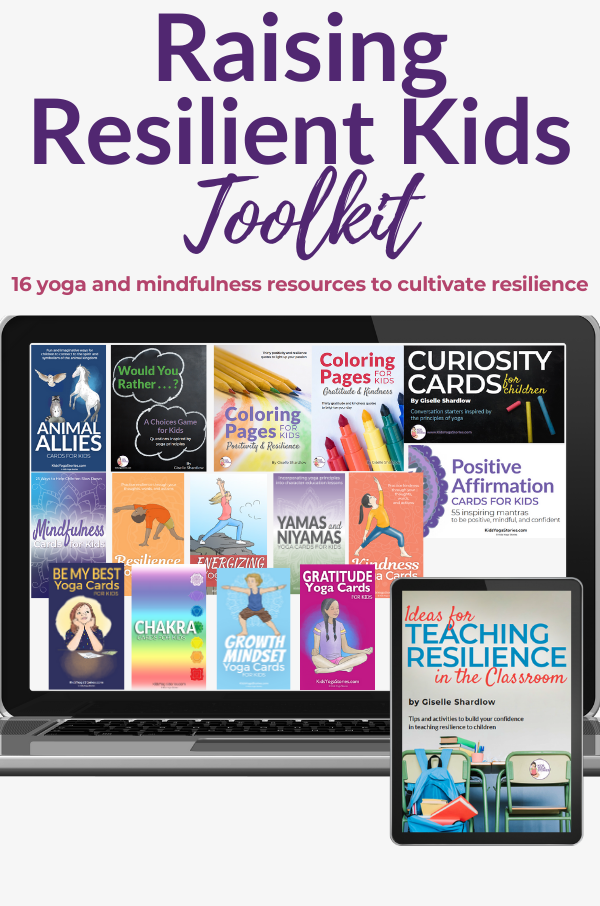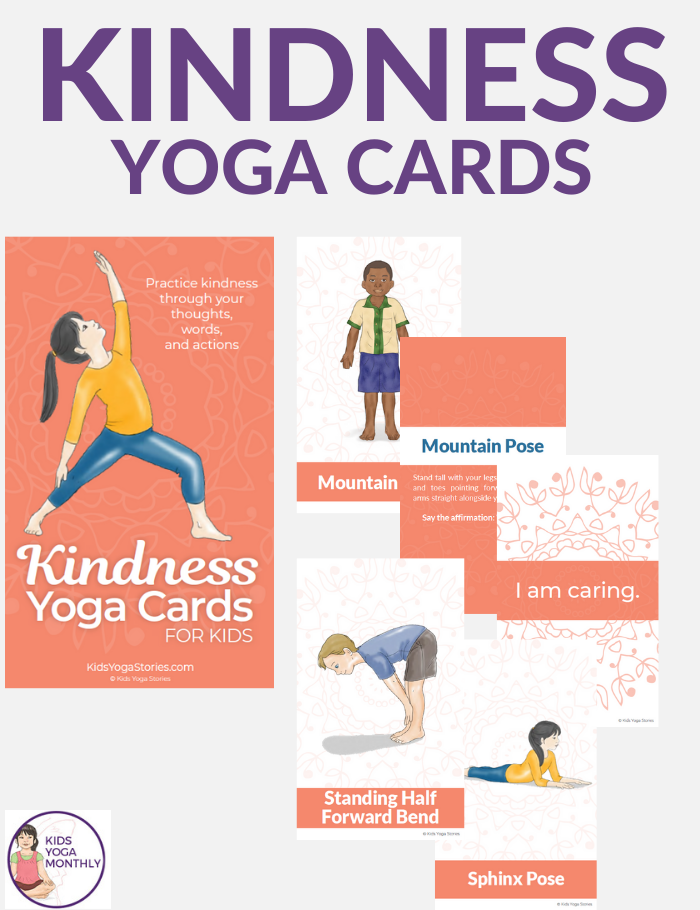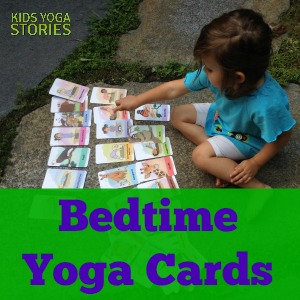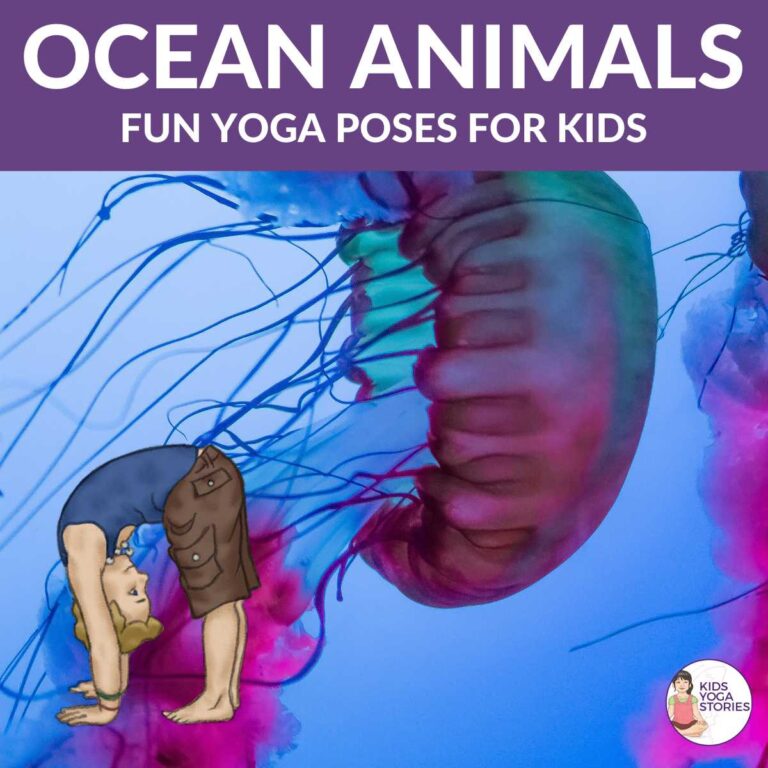What is Heart Coherence? The Science Behind Mindfulness.
Today’s article has been graciously shared by Cassandra Troughton, a teacher’s assistant working in a special education classroom in Canada.
Hello, everybody! My name is Cassandra. I am an educational assistant for a special needs class at Edmonton Public Schools, and I am extremely passionate about health and wellness, specifically MINDFULNESS!
I started a Mindfulness Club at my little elementary school about four years ago. It slowly evolved throughout the years and encountered some challenges this last year with the school shutdowns and COVID restrictions. But I took on these challenges head-on, because I believe there is no better time than right NOW to be practicing mindfulness and building resilience in our lives and the kiddos we influence.
Trying desperately to get mindfulness into all of our classrooms and to inspire the teachers to lead it daily, I got creative… I did some research and put together a presentation for my staff called “Resiliency and Heart Coherence.”
What is heart coherence?
You might be asking…
Over the summer, I read a fabulous book by the wonderful Dr. Gabor Mate called When the Body Says No: The Cost of Hidden Stress.
For those who don’t know, Dr. Gabor Mate is a physician and an internationally renowned speaker who specializes in addiction, trauma, childhood development, and the relationship of stress and illness on the body. In this book, he mentioned the term “psychoneuroimmunology,”and of course, that long and confusing term caught my attention.
Psychoneuroimmunology studies the interaction between psychological processes (our thoughts and emotions) and the nervous and immune system of the human body. He suggests that our thoughts, emotions, and even our surrounding environment all impact our health. Those impacts have the potential to be either positive or negative.
That got me thinking…
How can we make sure those impacts on our health are positive? And how can we make sure our thoughts and feelings (and the thoughts and feelings of the kiddos in our lives) can remain in check so we can all live healthy and full lives?
I work with elementary kiddos who are feeling very vulnerable to the world’s current circumstances, and I wondered, “How can I support my students through these tough times and create some mental stability?”
I started to do a little digging… and a little more reading… and I came across some extremely valuable material from Dr. Joe Dispenza that explained how the key to our health lies in the heart.
Let me explain further. But before I get into any more information about our hearts, I would like to address some background information about our autonomic nervous system (ANS). Trust me, it’s important that we go through this first.
What’s the autonomic nervous system?
Think of your ANS as a car. It consists of two functions in order for the car to run smoothly: the accelerator and the brake. You can think of your human accelerator as the sympathetic nervous system (SNS) and your human brake as the parasympathetic nervous system (PNS).
Our SNS is our acceleration. This system is triggered when the body is in a state of heightened stress. It puts our bodies into “fight/flight or freeze” mode. It forces us to make a decision to fight the situation or flee the situation. Sometimes it even causes us to freeze and do nothing.
The PNS is the portion where our body conserves energy. When our bodies can rest and relax because there are no threats or stresses nearby, both of these systems work together to maintain balance and harmony in the body.
Speaking of stress, there are essentially two kinds of stress.
Short-term stress can be beneficial if resolved. Those are stresses like studying for a test or preparing for a meeting at work. These short-term stresses help you grow, and they create something called “heart coherence.”
On the other hand, long-term stress, which occurs when your body is living in a constant state of that “fight/flight or freeze” mode.
When people have lived through traumatic experiences (in some cases, many traumatic experiences), they can get stuck in something called a stress loop. This means that they’ve been through so much trauma and stress, that they begin to view the chaos and uncertainty as normal, so they get in that habit of being in stressful experiences. Then the stressful experiences keep on happening.
But I am truly not here to tell you that those who get stuck in that stress loop are stuck there forever. In fact, I’m here to tell you the opposite!
I’m here to tell you that there is hope—hope for us and hope for our kids. It takes time, practice, and knowledge, but it is possible.
And this is where our good old friend heart coherence comes into play…
Heart coherence is…
When the heart beats in a rhythmic and consistent pattern, this is different, of course, than your heart rate, which measures speed.
On the other hand, heart incoherence is when your heart beats in a fragmented rhythm and the spaces between beats are inconsistent. Incoherence is usually brought on by unresolved stress. Every emotion we experience affects our heart rhythms!
Another interesting thing we’ve learned about heart coherence is that when our hearts are in that coherent state, we can actually regulate our internal state independently of what we’re experiencing in the world around us. So even though we may be experiencing much stress, anxiety, and uncertainty in our lives, it is possible for us to regulate our heart and our emotions so that our health can remain in balance.
This, of course, comes with practice. And lots of it! Remember, though, if we spent years and years in trauma and building this traumatic pattern for our body, it’s going to take as much time and effort to get our bodies out of the stress loop.
Let’s talk about the heart-brain connection.
We hear a lot about the brain and heart separately, but the truth is, these two are a mighty team. The heart and brain emit electromagnetic waves that are broadcasted into the space around our body, creating an electromagnetic field. Researchers have found many connections between the heart and brain through this field. They’ve even found that these broadcasted waves can affect the people and the environment around us! I’m sure you’ve experienced this before.
Have you ever walked into a room full of people, and you could just sense the tension? And then you began to feel tense? Or maybe you’ve felt down in the dumps then walked into a room full of cheerful and ecstatic individuals, and slowly, your mood started to change to match those around you. These are examples of a group’s electromagnetic fields affecting and influencing another.
Looking more closely into the heart-brain connection, the heart has its own nervous system, 40,000 neurons and an electromagnetic field 5000x BIGGER than the brain! The brain’s waves seem to synchronize and move to the rhythm of the heart.
And so what does this mean?
Who is the true leader of our team?
The heart! Fascinating!
Another way that our heart and brain share a connection is through something called Afferent Neural Pathways.
There are ascending pathways which move fibers up from the heart to the brain and descending pathways that take those fibers back down to the heart. 90% of these fibers travel UP through the ascending pathways which proves that the heart independently responds to the environment, processes emotions and regulates its rhythm without receiving ANY information from the brain!
Okay great, so our heart-brain connection is exciting but how does that help our stress levels and our bodies stay healthy?
Well, while these fibers move through the ascending neural pathways, they leave the heart and travel through the vagus nerve, the thymus gland and the frontal lobe before making it to the amygdala and then back down through the descending pathways.
The thymus gland is notable here because it sits right behind the breastbone and is intimately connected to the heart. It serves a major role in the production of T cells which defend the body from pathogens such as bacteria and viruses!
So, when your heart and brain are moving coherently, your body’s immune system thrives! Incoherence ends up leading to the dysfunction of the thymus gland and the immune system.
Don’t we all want to boost our immune systems to their full potential?!
Resiliency can be measured.
Using something called heart rate variability analysis (HRV), doctors can measure the flexibility of the heart and nervous system. They look at the variation of the heart’s beat-by-beat intervals to determine the HRV then determine an individual’s resilience level. Individuals with a moderate-to-high level of HRV are considered to be more adaptable and resilient, and those who score a low level of HRV are considered less adaptable to life changes. This low number is associated with numerous health problems.
Doctors can actually predict with a seventy-five percent accuracy whether individuals who have or will have health problems in the near future just by looking at their HRV number—without any background information on the patient at all! Fascinating!
HRV can be assessed through various approaches. The most common method for observing the changes in rhythm is the heart rate tachogram—a plot of the sequence of time intervals between beats. Where can I get myself one of these machines?!
The synchronization of the heart and brain results in OPTIMAL HEALTH PERFORMANCE and a BOOSTED IMMUNE SYSTEM!
The quality of our heart’s rhythm has consequences on our overall health. Of course, these consequences can be positive or negative. So how can we make sure that our thoughts and feelings (and our kiddos’ thoughts and feelings) can remain in check so we can all live healthy and full lives?
The heart is the key!
It is like an amplifier for the brain! So in order to tap into that heart-brain connection, we must first focus on the heart.
Okay, so now that we know we must focus on our hearts, but how can we get our hearts into a coherent state and gain resilience?
These are the two key ingredients to cooking up heart coherence…
FOCUS and FEELING!
First, let’s elaborate on feeling… And by that, I mean literally feel all the heartfelt emotions from the heart that you can! When we focus on heartfelt feelings such as gratitude, kindness, appreciation, inspiration, freedom, compassion, and joy, our body, heart, and mind respond positively, and we can enjoy improved health!
Here’s a quote from one of my favorite neuroscientists, Dr. Joe Dispenza, on gratitude:
“Ten minutes of gratitude a day, three times a day, strengthens the immune system by fifty percent. The body begins to produce a chemical called Immunoglobulin A (IGA)—your body’s primary defense against bacteria and virus. It’s your body’s natural flu shot.”
-Dr. Joe Dispenza
How powerful is that?! Something as simple as feeling gratitude can boost your immune system by a whopping fifty percent!! All in the palm of your hand!
Now, about the second ingredient, focus. There are many ways to generate focus and to be present minded and engaged solely on one task. One of the best ways to practice focus is by breathing! Deep breathing affects our brain, heart, and immune system in many different ways.
Deep breathing and focusing on belly breaths helps to get our brain out of that fight-or-flight mode. When we suspect a threat in our lives, it’s easy to “flip our lid,” and all rational thought goes out the window so we can only make decisions through our emotions (which doesn’t always work in our favor). Taking deep breaths allows our whole brain to function properly and sync back up with its separate parts.
We don’t normally pay any attention to our breathing. We assume the body does it on its own and that we don’t have to put in any work, but that isn’t necessarily the case.
Over time, human breathing has become more and more shallow, and most of us are not filling up our lungs to full capacity. Normally, we only take in about two-thirds of the oxygen our lungs are capable of holding, and that last one-third is the most crucial. This is where most of the oxygen is absorbed into our bloodstream and can be transported to the rest of the body much faster and more easily.
Breathe deep every day, people!
Nostril breathing vs. mouth breathing:
There are a ton of breathing techniques, and they all have amazing benefits, but I would like to mention one in particular that I’ve found extremely beneficial—nostril breathing!
There’s been lots of research on the differences between mouth and nostril breathing. Researchers have found that breathing mostly through our mouth can lead to health issues, whereas, breathing primarily through our nostrils actually has amazing health benefits!
When we breathe through our nostrils, sinuses release a huge boost of nitric oxide, a molecule that plays an essential role in increasing circulation and delivering oxygen to cells! Nitic oxide increases immune function and improves mood.
Now, you may be thinking, “Focus and feeling sound like another way of describing mindfulness practices…” If you are, then you are correct!
If you’re not familiar with mindfulness, it can be defined as “the quality or state of being consciously aware of something.” It’s quite literally being aware of anything.
This includes consciously feeling those heartfelt emotions we just spoke about and the conscious breathing we went through, along with many other mindful activities. Some other activities include yoga, mindful eating (using all your senses), going for a walk in nature, meditating, painting, drawing, and coloring!
The main thing is… the repetition of these practices and skills is what helps to recondition the body, rewire the brain, and reconfigure your biology!
The choice is yours.
When we practice positive emotions, breathing techniques, and other mindfulness practices, it increases our heart-brain connection. This, in turn, promotes resiliency—in all humans, kids and adults alike!
Remember, psychoneuroimmunology teaches us that our whole body and mind are connected. Your thoughts, emotions, and environment have implications on your health and resilient nature. And YOU have the power to do something about it.
“We are coming to understand health not as the absence of disease, but rather as the process by which individuals maintain their sense of coherence (i.e. sense that life is comprehensible, manageable, and meaningful) and ability to function in the face of changes in themselves and their relationships with their environment.”
-Heart Math Institute
PIN IT FOR LATER
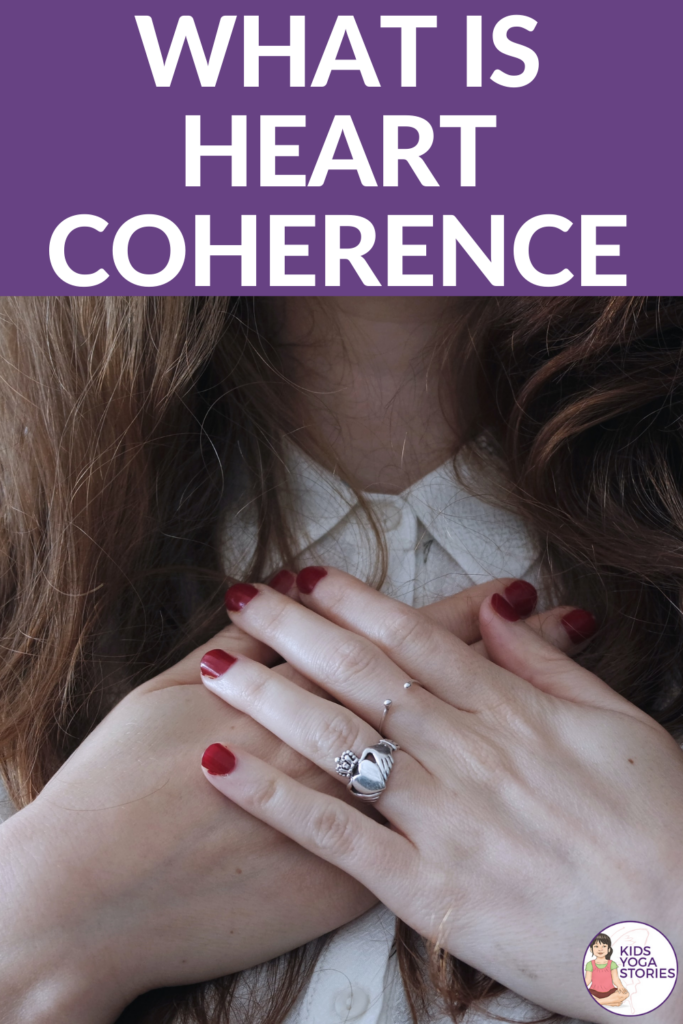
ABOUT THE AUTHOR

Cassandra Troughton (a.k.a. Miss T) is an educational assistant from Canada. She has worked with Edmonton Public Schools for over seven years, primarily in the special needs adaptability program (Gr. 1-6) and as the Health and Wellness lead at her school in Edmonton, Alberta. Her passions include health, wellness, and the practice of mindfulness! She loves passing on her knowledge of mindfulness to her students and fellow educators. You can find her at https://mindfulmisst.com/.
Check Out Our Raising Resilient Kids Toolkit
Life is full of unexpected experiences, adversity, and challenges. It is up to us to learn how to respond in a balanced, grounded, and productive way when we’re faced with emotional turbulence.
magine being able to stay calm in the face of whatever challenges life brings you. This is a gift we can give children. The gift of learning to self-correct and quickly recover from challenging situations so that they can be socially responsible individuals who can tackle anything that comes their way.
We created this toolkit to help teach children how to discover and hone their resiliency muscle through yoga poses, mindfulness exercises, and contemplation practices.
This toolkit contains 16 yoga and mindfulness digital resources that will help you foster resiliency by helping children:
- Believe they have control over themselves and their world.
- Maintain an optimistic view of life and see change and challenges as opportunities.
- Develop a strong sense of character through caring for others, empathy, and a strong sense of right and wrong.
- Form connections with others and foster a sense of healthy belonging.
- Contribute to the world around them by taking action and making choices that improve the world.
- Believe that their lives have meaning and are committed to their goals.
- Boost self-confidence and a belief in one’s own abilities.
- Cope and manage everyday stressors to arise
- Better identify varying emotions and self-regulate
Get instant access to Raising Resilient Kids Toolkit here.
Check Out Our Kindness Yoga Cards for Kids
Teach kindness through your thoughts, words, and actions.
In these kindness cards, we’ll explore various practices to cultivate kindness in our thoughts, words, and actions in the hopes of contributing to the happiness and freedom to all in the world.
This lovely deck includes:
- 10 yoga poses (actions)
- 10 corresponding affirmations (words)
- Loving kindness meditation (thoughts)
- an index card listing the kindness poses and affirmations in a sequence
- yoga tips and suggestions
- descriptions for each pose
The yoga poses in the index are sequenced specifically to invite flow from one pose to the next.
The yoga kids featured in the illustrations are multicultural and from a variety of countries. Ages 4+
Download Kindness Yoga Cards for Kids instantly here.

